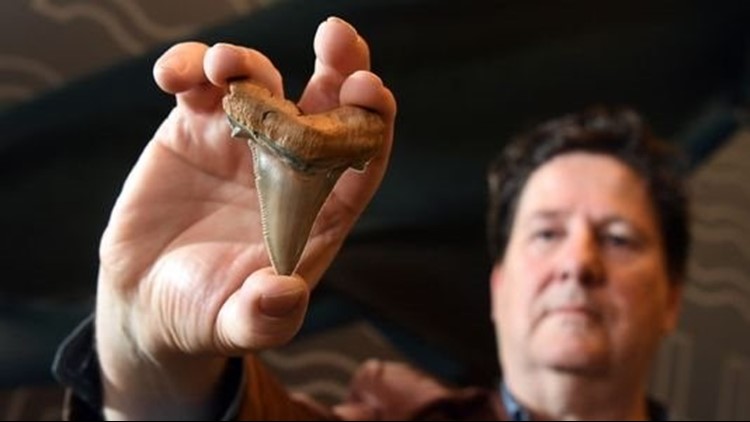What started as a regular day at the beach for Philip Mullaly ended with a key scientific discovery.
Mulally found a set of shark teeth dating back 25 million years, belonging to a "megatooth" shark believed to be twice the size of a great white.
"I was walking along the beach looking for fossils, turned and saw this shining glint in a boulder and saw a quarter of the tooth exposed," Mullaly said in a statement. "I was immediately excited, it was just perfect,and I knew it was an important find that needed to be shared with people."
Mullaly donated the teeth to Museums Victoria in Australia to keep as part of their collection.
The museum said the teeth belonged to an extinct species called the Great Jagged Narrow-Toothed Shark (Carcharocles angustidens), which could grow to twice the size of a great white.
The shark was among the top predators during its heyday 25 million years ago, feasting mostly on small whales.
"These teeth are of international significance, as they represent one of just three associated groupings of Carcharocles angustidens teeth in the world and the very first set to ever be discovered in Australia," Dr. Erich Fitzgerald, senior curator of Vertebrate Palaeontology at Museums Victoria, said in a statement.
The New York Times reports Mullaly found the teeth in 2015. During two expeditions taking place last December and January, Fitzgerald led a team of experts to the location where Mullaly found the teeth to excavate.
Researchers collected more than 40 shark teeth, including those from a species called the Sixgill Shark.
The species, still alive today, likely fed on the remains of the megatooth shark after it died.
"This find suggests they have performed that lifestyle here for tens of millions of years," Museums Victoria paleontologist Tim Ziegler said.
The teeth went on public display Thursday and will remain available to public view until October.



